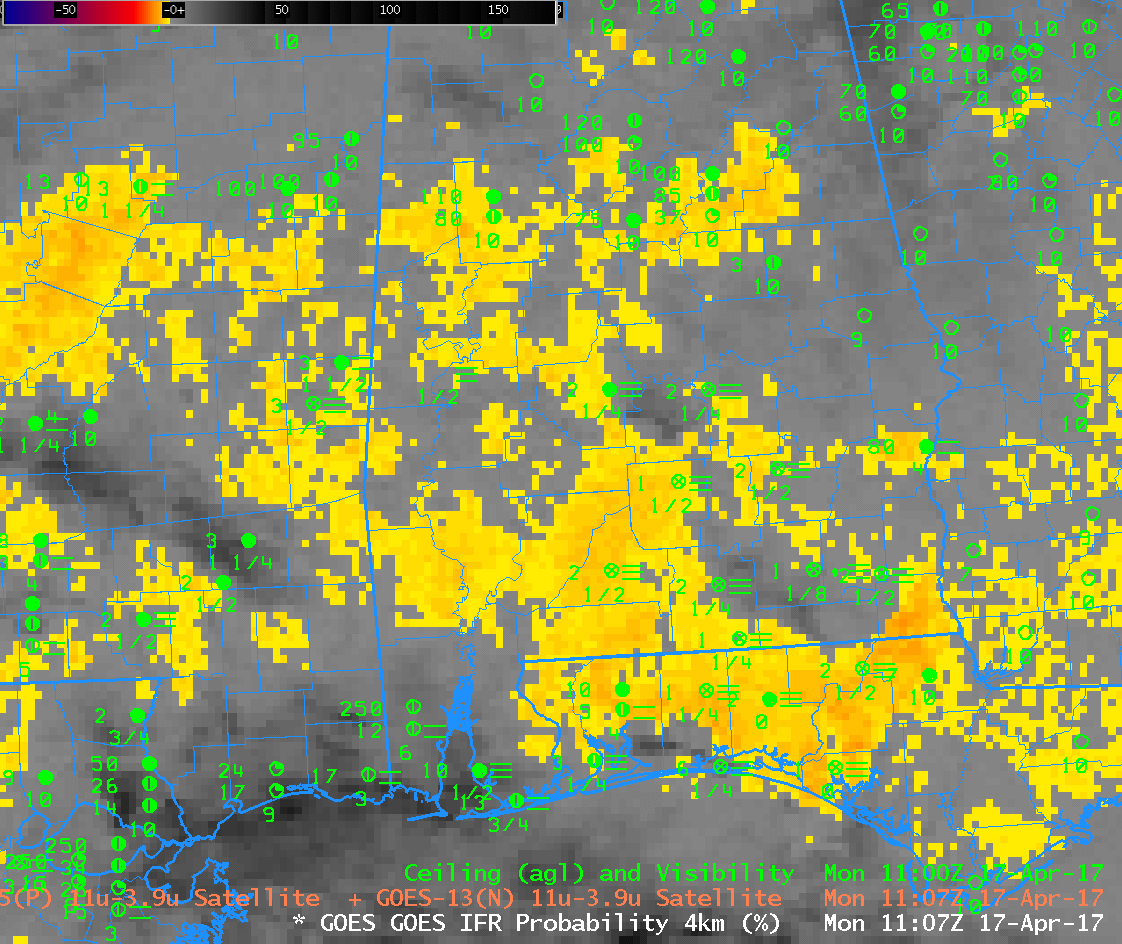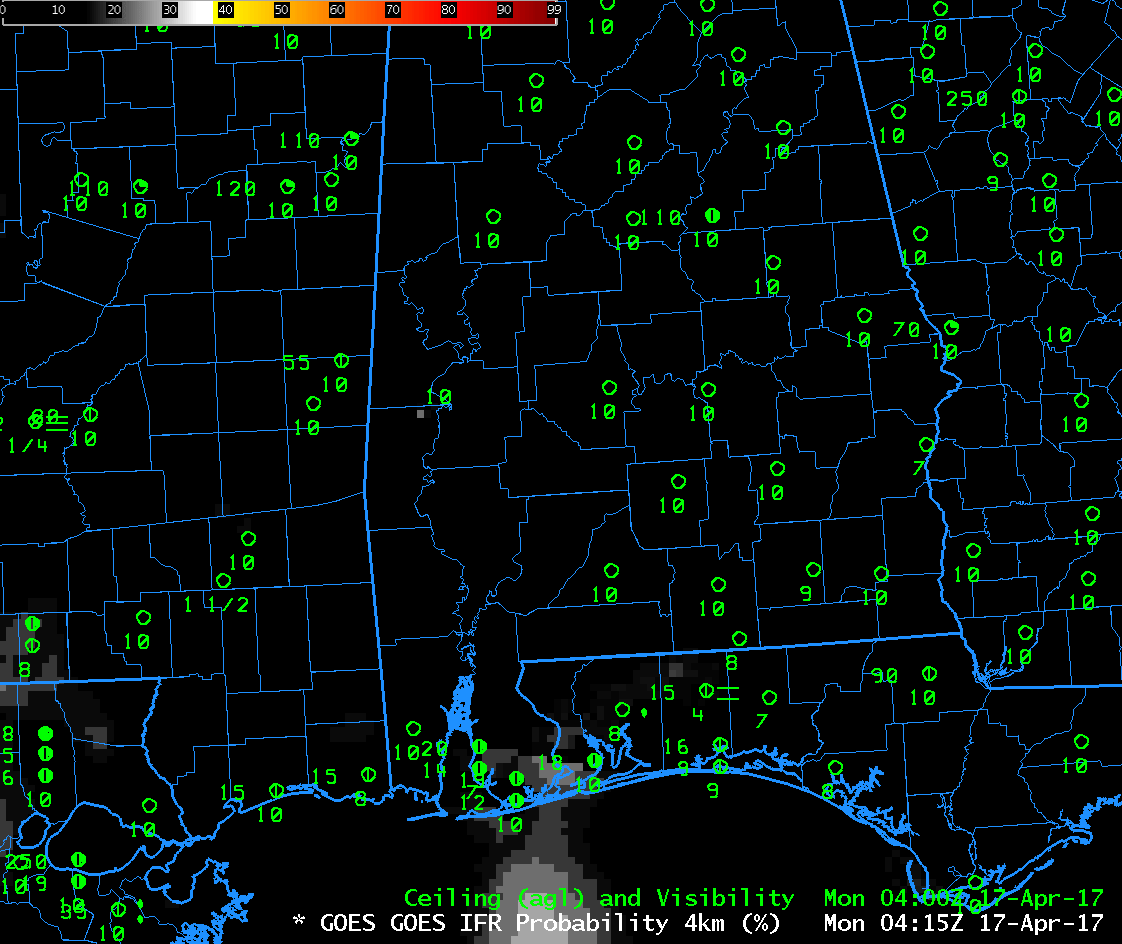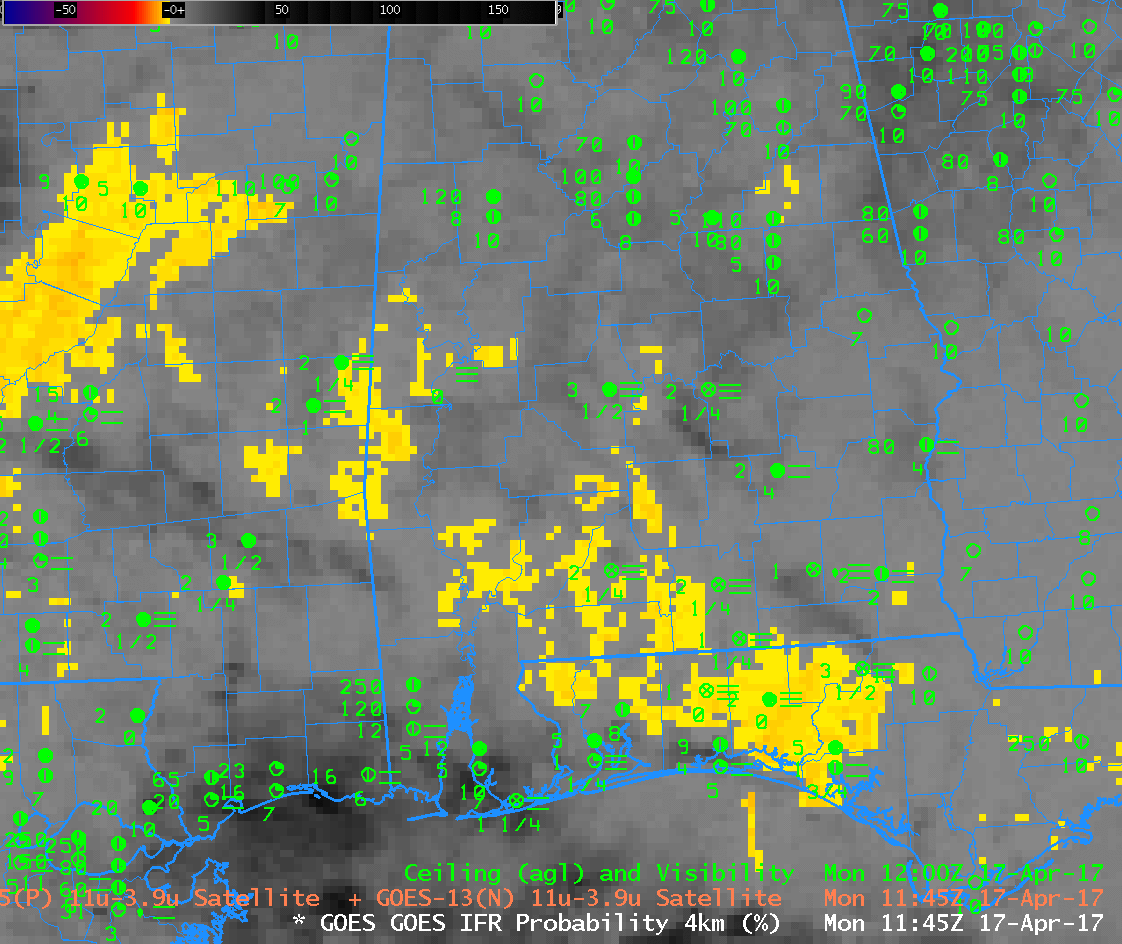Note: GOES-R IFR Probabilities are computed using Legacy GOES (GOES-13 and GOES-15) and Rapid Refresh model information; GOES-16 data will be incorporated into the IFR Probability algorithm in late 2017.
GOES-R IFR Probability fields, above, show increases in IFR Probability starting around midnight local time. The IFR Probability fields generally outline the regions where fog occurred (and which led to the issuance of dense fog advisories to the east of Mobile). How did the brightness temperature difference field capture this event? Brightness Temperature Difference fields have been used historically to identify regions of stratus.

GOES-13 Brightness Temperature Difference fields (3.9 µm – 10.7 µm), hourly from 0415-1107 UTC on 17 April 2017 (Click to enlarge)
The brightness temperature difference field, above, shows a slow increase in negative values (negative because the brightness temperature computed from emitted 3.9 µm radiation is cooler than that computed from emitted 10.7 µm radiation over clouds composed of water because such clouds do not emit 3.9 µm radiation as a blackbody), but careful inspection of the field shows IFR conditions in regions outside the largest signal (highlighted in this enhancement in yellow). This occurs mostly were cirrus clouds are indicated (represented as dark regions in the enhancement, over central Mississippi, for example). In such regions, the IFR Probability fields can maintain a signal of IFR conditions because low-level saturation is predicted by the Rapid Refresh Model.
This fused product combines the strengths of both inputs: Satellite detection of low clouds, and model prediction of low-level saturation.
As the sun rises, the amount of reflected solar radiation at 3.9 µm increases, and the sign of the brightness temperature difference changes from negative at night over water clouds to positive. This toggle below shows the brightness temperature difference at 1107 and 1145 UTC. The decrease in signal does not necessarily mean fog is decreasing.

GOES-13 Brightness Temperature Difference fields (3.9 µm – 10.7 µm) at 1107 UTC and 1145 UTC on 17 April 2017 (Click to enlarge)
A toggle of the IFR Probability and the Brightness Temperature Difference at 1145 UTC, below, shows that the IFR Probability fields can maintain a useful signal during the time of rapid changes in reflected solar radiation with a wavelength of 3.9 µm.


